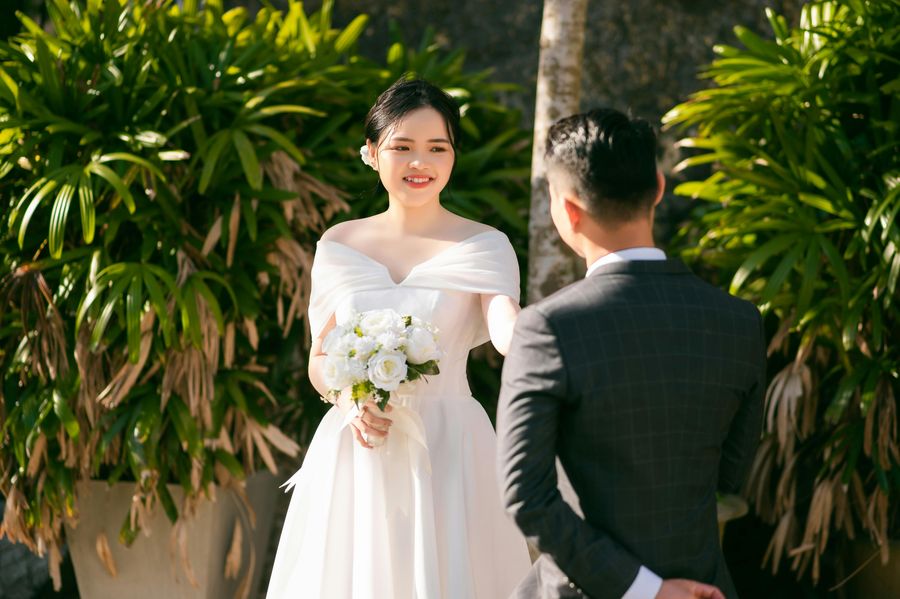Jewish Wedding Traditions and Rituals: A Guide to Understanding the Joyous Day
Congratulations! You’re getting married! As you prepare for the happiest and holiest day of your life, you may be curious about the traditions and rituals that Jewish weddings entail. In this article, we will guide you through the various customs and symbolism of Jewish weddings to help you better understand this magical day.
Importance of Wedding Day
1. A Holy Union
In Jewish tradition, the wedding day is considered the holiest and happiest day of one’s life. It is a day where two separate souls become one and merge into a complete soul.
2. Shared Responsibility
The couple is now responsible for each other’s well-being and happiness. Their love and commitment to one another are considered sacred and must be treated with utmost respect and devotion.
Pre-Wedding Rituals
1. Pre-Wedding Fast
Just before the wedding day, the bride and groom may choose to embark on a fast. This is not a requirement, but many couples do it as it symbolizes repentance and forgiveness, similar to the Jewish holiday of Yom Kippur.
This fast offers the couple an opportunity to reflect and focus on their relationship with each other and with God.
2. The Bedken Tradition
The Bedken is a pre-ceremony tradition where the groom meets his bride under a veil. It symbolizes modesty and the idea that inner beauty is more important than outward appearance.
It also shows the groom’s commitment to his bride, just as Jacob had to work for seven years to marry Rachel in the Bible.
Ceremony Traditions
1. The Chuppah Tradition
The Chuppah is a central tradition in Jewish weddings. It is a canopy, usually made of cloth, which represents the couple‘s new home.
The Chuppah traditionally has four corners and open sides, symbolizing the couple’s hospitality and openness to their community. Before the ceremony begins, the groom walks to the Chuppah, accompanied by both his parents.
The bride is then escorted by both her parents, and they circle the Chuppah seven times, symbolizing building a new world together.
2. Circling and Vows
- After the bride and groom have circled the Chuppah, the ceremony begins.
- Two cups of wine are placed on the table, and the betrothal blessings are recited.
- The couple then exchanges plain gold rings that symbolize the law of Moses and Israel.
- The marriage contract, or Ketubah, is read out loud, which includes the duties and responsibilities of both partners.
- The witnesses sign the Ketubah, and the couple drinks from the cups of wine.
3. Sheva B’rachot Tradition
After the ceremony, the guests gather around the newlyweds and recite the seven blessings, known as Sheva B’rachot.
These ancient Jewish teachings express beautiful celebratory statements and are recited in both Hebrew and English.
4. Breaking of Glass Tradition
The breaking of the glass is another defining tradition in Jewish weddings. It symbolizes the destruction of the temple and represents the destiny of the Jewish people.
At the end of the ceremony, the groom smashes a glass with his foot, and everyone shouts “Mazel Tov!” This is a joyous moment, even though it represents a tragic event in Jewish history. The shards of broken glass also represent the fragility of relationships, reminding the couple to handle their marriage with care.
Post-Ceremony Rituals
1. Yichud Tradition
The Yichud is a post-ceremony tradition where the newlywed couple spends a few moments alone together. In Jewish custom, this is a time to reflect on their relationship and to thank God for bringing them together.
Yichud is a private moment, and it symbolizes the couple’s newfound intimacy.
Husband and Wife Relationship
1. The Marriage Union
The marriage union in Jewish tradition is sacred, and it encompasses many obligations, rituals, and traditions. The husband and wife are considered equal partners in the union, and they have specific obligations towards each other.
The husband is responsible for providing the family’s material needs, while the wife is responsible for maintaining the household.
2. Ketubah (Marriage Contract)
The Ketubah is considered a Jewish civil law agreement, and it outlines the God-given blessings of the marriage union. It also outlines the duties and responsibilities of both parties.
The Ketubah is signed by two witnesses and is a binding agreement under Jewish law. In the case of divorce, the Ketubah protects the woman by stipulating that the husband must provide for his wife even in the event of separation.
Conclusion
In conclusion, Jewish wedding traditions and rituals have deep roots and numerous symbolism. Each tradition and custom contributes to the union of two souls, merging into one, and committing to fulfill their duties and responsibilities under Jewish law.
As you prepare for your Jewish wedding, embrace these traditions, and know that they make your special day unique and unforgettable. Mazel Tov!
Understanding the traditions and rituals of Jewish weddings provides a deeper appreciation of the significance of this joyous occasion. The various customs, such as the Chuppah, the Ketubah, and the Sheva B’rachot, all contribute to the sanctity of the marriage union. These traditions remind us of the love, respect, and devotion that are at the core of a successful marriage.
As you embark on this exciting journey, may you cherish these customs and rituals, and may they bring you joy and fulfillment for a lifetime. Mazel Tov!



